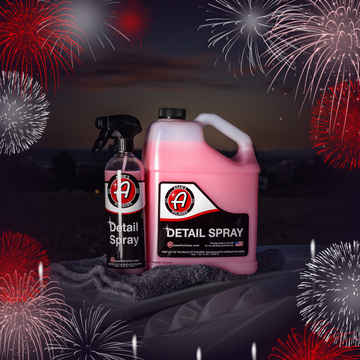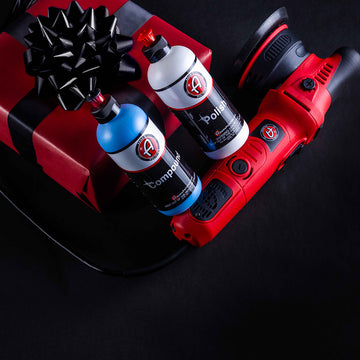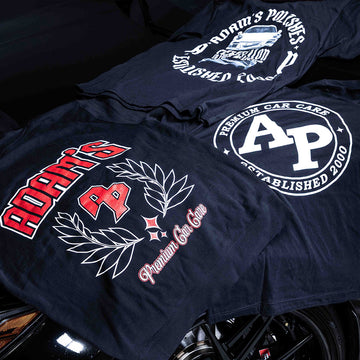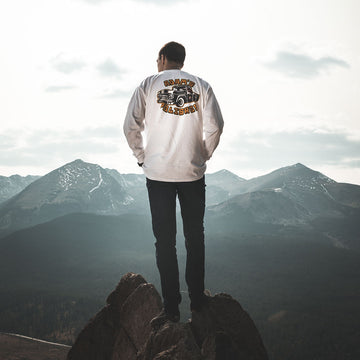While you are cleaning wheels and tires, now is the perfect time to discuss cleaning fender liners, since ideally you want to clean both of these components at the same time for efficiency. Generally you will want to clean fender liners the same time that you are scrubbing the tire, so that you only have to rinse each wheel and tire once. If you wait to clean the fender liner after you scrub and rinse the tire, then you will have to re-rinse the wheel and tire as all of the dirt, mud, and grime from the fenderwell drips down onto the wheel.
For carpet or felt-lined wheel wells, we recommend that you avoid spraying any chemical if you can. Instead, use a strong stream from the pressure washer (25° tip) or garden hose to blast as much dirt, mud, and debris out of the carpet liner as possible, spraying from the 12 o’clock position downward both clockwise and counterclockwise to push the dirt down rather than push it back up into the carpet. If you spray a chemical such as Tire & Rubber Cleaner into these carpet liners, it will create very large amounts of suds that will add considerable amounts of time to rinse out from each wheel, so that is why we recommend water pressure only in these instances. For plastic fender liners, Tire & Rubber Cleaner is an effective way to deep clean them to remove bug splatter, dirt, mud, and other road grime. Spray the liner generously with Tire & Rubber Cleaner, allow it to soak for 20-30 seconds, and scrub the liner thoroughly with the Fender Brush. Rinse the fender liner and wheel/tire at the same time, so that you do not have to rinse twice.
Tire & Rubber Cleaner works on other exterior textured plastic trim areas as well, such as wiper cowls, step rails, bumper inserts, grilles, bed rails, and so on. Spray it directly into an Edgeless Utility Towel and then wipe the textured area thoroughly. You can then either rinse the plastic with your hose or pressure washer, or wipe it clean with a second Edgeless Utility Towel. You will notice that Tire & Rubber Cleaner will leave plastics with a slightly darker appearance, unless the color pigment is heavily faded from the plastic. In those cases, you would need to restore the plastic after cleaning it, using our Black Trim Restorer. Plastic trim restoration is discussed in a separate write-up.
To wrap up this section, Tire & Rubber Cleaner is exceptionally great at removing old wax stain residue from textured plastic trim. It can remove very stubborn white wax discoloration on plastics, even if the plastic has been stained for a few years! It just takes a little time, patience, and scrubbing. For heavy stains, we recommend spraying Tire & Rubber Cleaner into one of our Deep Clean Erasers, and then carefully scrubbing the affected plastic area. You will see almost immediately just how much dirt and grime is pulled from the plastic and into the Deep Clean Eraser. Use an Edgeless Utility Towel to dry the area, and then inspect to see if the stain has been fully removed, or if some still remains. You may have to re-clean the area with this process two or three times over the next few weeks to fully remove wax residue staining.
Tire & Rubber Cleaner is also our preferred method for removing accidental Compound or Polish stains from plastic and rubber trim during the paint correction/machine polishing process. No matter how well you tape off trim areas when machine polishing, eventually you will inadvertently polish past your tape lines, hit a crack in between pieces of tape, or lift a tape edge with the polishing pad, which will then stain and discolor the plastic or rubber trim. Our blue Compound will stain areas more easily than the white Polish, due to its stronger correcting abilities, but there is no need to panic if this does occur. Usually this can be fixed by spraying a few mists of Tire & Rubber Cleaner into an Edgeless Utility Towel, scrubbing the affected area, and then using a dry side of the towel to wipe away the cleaner. If the towel is not enough to fully remove the stain, then move up to the Deep Clean Eraser, just like you would do with the wax stains above. Finally, you can re-wipe the area with Adam’s Surface Prep to ensure that it is fully clean and free of all traces of chemicals.















